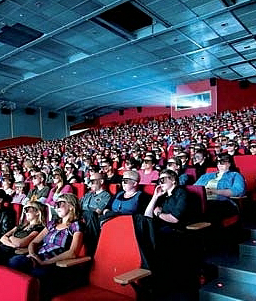3D Cinema

When you mention 3D movies, the reaction is often either very pro or very dismissive. The naysayers normally look back to the 1950s and say "It didn’t happen then, so why should it work now?"
Like so many things that have previously been commercial failures, improvements in understanding and technological development can now make a success of it. If we look back to those earlier times, the camera systems were very big and bulky, nothing could be visualised without developing the film, editing was difficult and projection was a nightmare, having to start and run two projectors in synch and still change reels. Many of the producers had no real understanding of the Human Visual System and so shot 3D movies guaranteed to give you a splitting headache! So why should it be different now? There have been many technological advances which have suddenly enabled a 3D Renaissance.
Live Capture: Most if not all 3D movies shot today use Digital Cameras. Several Companies have developed very elaborate camera rigs to allow remote control of such parameters as inter-axial distance, 'Toe' of the cameras (Parallel lenses or lenses pointing inwards), and tracking zooms (Both camera lenses zooming in synchronism). These tools allow a much better opportunity to make informed choices in production and to make non-tiring 3D. Digital production facilitates on set monitoring and fast editing. There is however much debate on the right and wrong way to shoot 3D. You still see movies shot with basic errors of scale, or foregrounds/backgrounds that cause headaches. In addition to the well-established use of 24 Fps, we now also have movies such as "The Hobbit" using higher frame-rates (48 Fps).
Dimensionalization is the technique for taking a 2D production and turning it into a 3D movie. This technique uses powerful computers and skilled operators to identify all the objects in a frame and reposition them for the required depth effect (Depth Mapping). This is not a trivial process, as objects may obscure or reveal information behind them which must be concealed or revealed. If a hole is revealed the operator must hand paint in the hole. Though time consuming and relatively expensive, the results can be excellent and may, in fact, give better results than live shooting 3D directly. 'Avatar' set the quality bar very high for live 3D production and there have been several new 2D-to-3D conversion technologies introduced. Unfortunately, some of these technologies have been sadly lacking and the studios are having to take more care about how they allocate the work - The shortest time and lowest budget doesn’t always ensure a good result!
